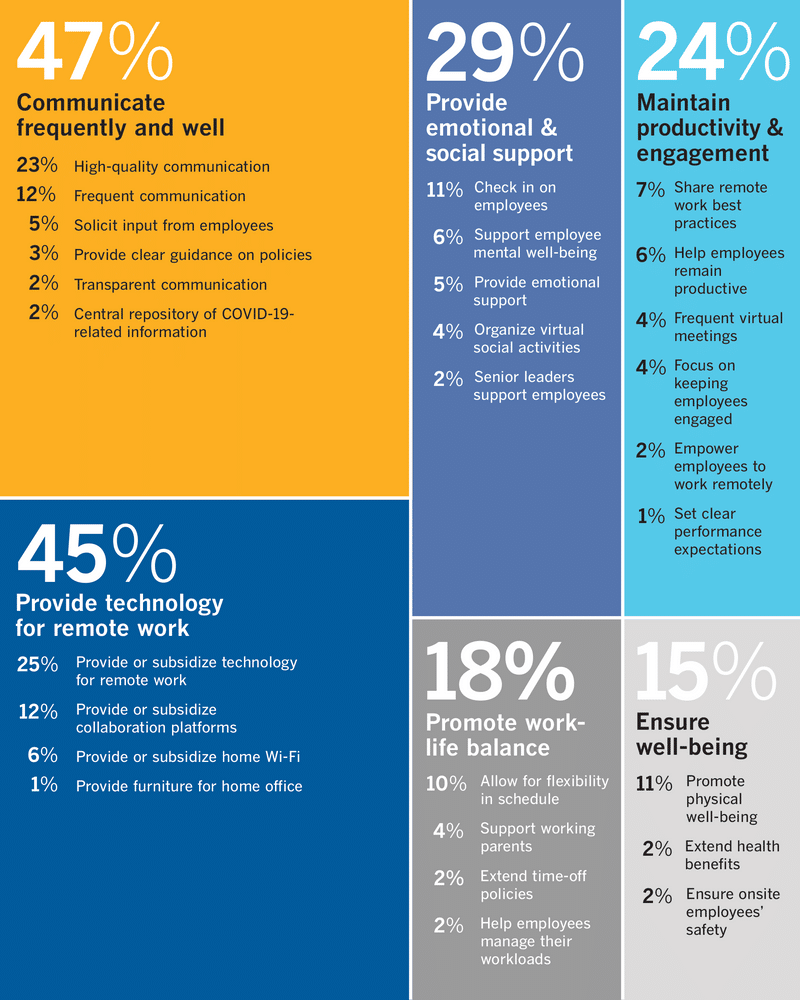Over the past several months, COVID-19 cases have been on the rise and re-opening plans for businesses are in constant flux. Yet, savvy business leaders around the world are moving forward with remote work strategies…not a temporary fix, but as state of existence to drive business continuity and protect the health of their people.
According to the recent Harvard Business Review poll, many initial concerns about employee productivity, performance, and collaboration have been diminished, as employees are doing better than anticipated.
As one employee stated, “I’m able to get everything accomplished, just like before, and I think everyone else is finding they can too.” Indeed, home offices are working and the concept of remote work once tolerated (based on necessity), is now more of the norm as employees have been successfully adjusting. In fact, there is more concern over employees not having enough “boundaries” and now they are working too much, as there is little separation between home life and work life.
Now, more than half of US workers are remote. Widespread remote work has created new challenges, but the good news is that organizations around the world are experimenting with creative solutions to isolation, engagement and productivity. Employees are no longer able to have the “water cooler” small talk and hallway interactions with people outside their teams. What value is lost when there are no more organic office place conversations? And, what about trust in leadership?
According to research studies on work behaviors, the lack of these types of interactions may lead to lower levels of trust. The decline in such spontaneous communications to gain trust can have a negative impact on innovation and collaboration within internal teams.
So what’s the solution? A recent survey of over 400 HR leaders, with results aggregated using Natural Language Processing (NLP), resulted in these key themes of actionable steps that companies can take to support remote workers.
Source: The COVID-19 Pulse of HR survey, conducted between April 19 and April 29, 2020.
It’s no surprise that the most impactful action is frequent communications. When employees work from home, they can feel disconnected from their organizations, and nearly half (47%) of participants in the survey cited effective communication as crucial to their transition to remote work.
Leaders, with the support of Internal Marketing Communications teams, need to increase their methods and frequency of communications to provide more clarity for employees, removing the ambiguity. As Heather Brunner, CEO of WP Engine commented, leaders “must invest in clarity and become a chief repetition officer.”
MeBeBot is helping customers not only build trust with their employees, but help them extend valuable communications and messaging. By leveraging the vast knowledge base of content for HR, IT, and Operations related employee questions, Internal MarComm, HR, and IT teams can update answers in real-time, providing frequent and consistent communications.
Effective communications takes time…and time is a valuable commodity and a constant constraint. MeBeBot’s solution provides the much needed automation to drive redundancy in communications/messaging, so that business leaders can focus on high value, strategic work to drive revenues and reduce / maintain operating expenses. And, by using an Intelligent Assistant App in Teams, Slack or web chat, employees have access to information they need, 24/7 from anywhere in the world, lowering operating costs yet building the trust and connection every remote employee needs now.
WATCH A DEMO TO GET STARTED TODAY!
RELATED RESOURCES:
Harvard Business Review: The Implications of Working Without an Office
Harvard Business Review: Effective Managers Say the Same Thing Twice or More
MIT Sloan Review: Five Ways Leaders Can Support Remote Work


